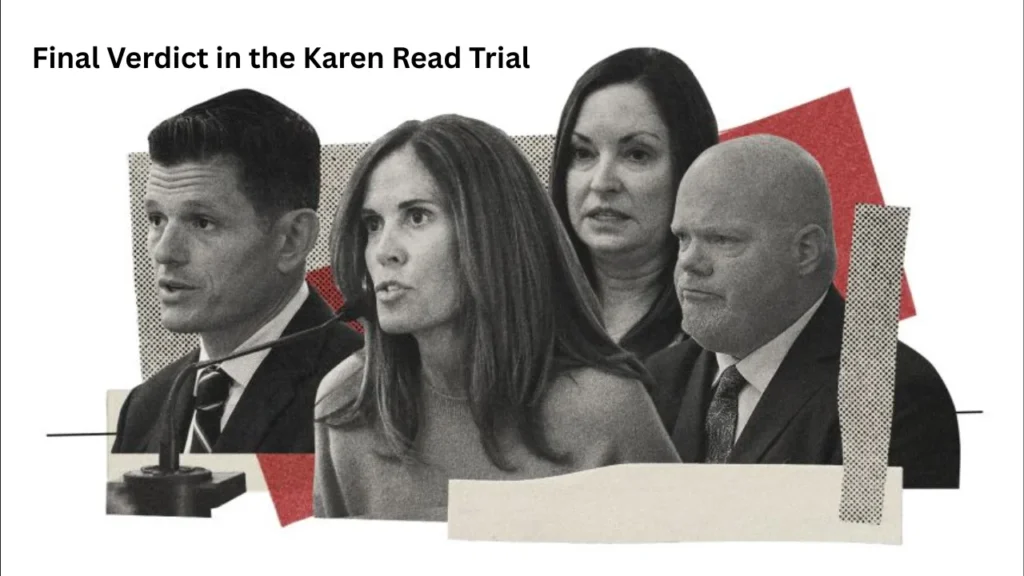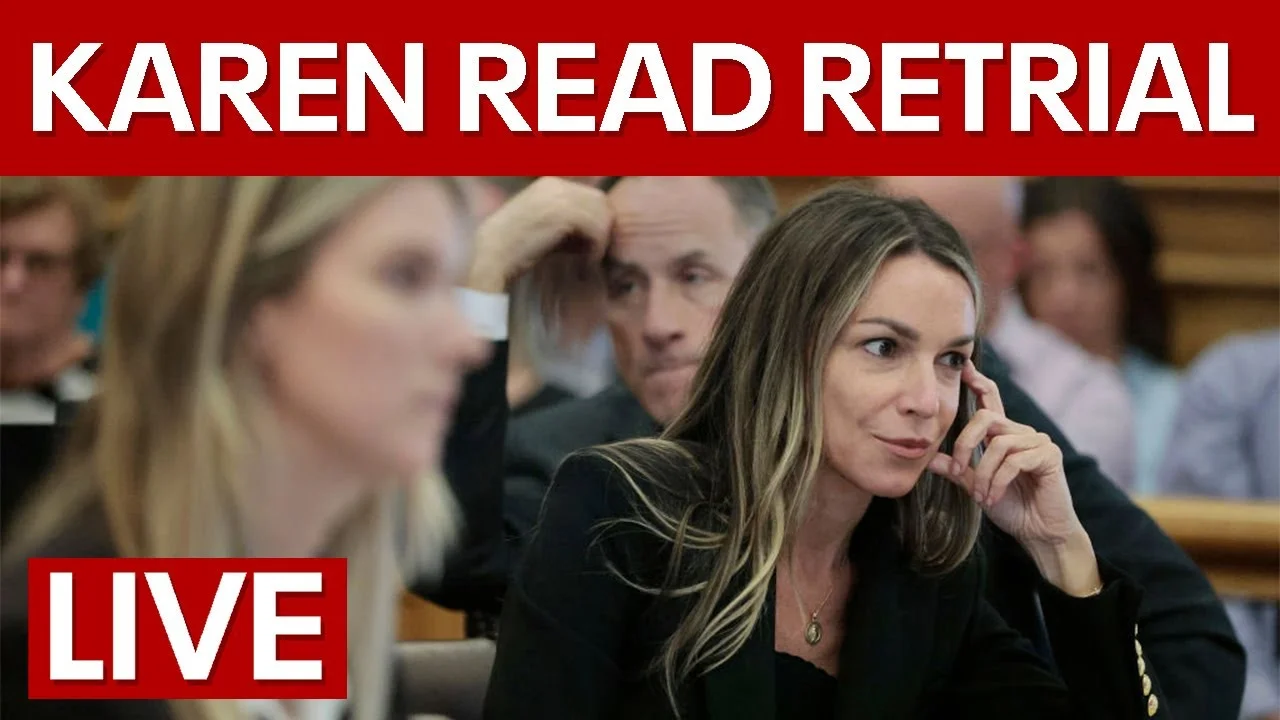The Karen Read trial is one of the most gripping and controversial cases in recent Massachusetts history. It drew nationwide attention due to its shocking claims, emotional courtroom scenes, and questions about police integrity. What started as a tragic death turned into a legal drama involving accusations of murder, misconduct, and potential cover-ups.
This article breaks down the entire Karen Read trial, including the background, timeline, evidence, courtroom strategies, public reaction, and final verdict.
ALSO READ: Dior Saddle Bag Styles Prices And Care
Who Was John O’Keefe?
John O’Keefe was a respected Boston Police Officer. On the night of January 29, 2022, he was found dead in the snow outside a home in Canton, Massachusetts. His girlfriend, Karen Read, quickly became the focus of the investigation. What followed was a legal storm that shocked the community and made headlines for months.
The Events Leading Up to the Incident
The night before his death, O’Keefe and Read were out drinking. According to prosecutors, Read drove O’Keefe to a party hosted by Brian Albert at 34 Fairview Road in Canton. At some point during the night, the prosecution claimed Read, in a fit of rage or under the influence, reversed her SUV and hit O’Keefe as he was getting out.
ALSO READ: Sexy Red Lip Gloss Tips For A Perfect Pout
Charges Against Karen Read
Read was arrested and charged with:
- Second-degree murder
- Manslaughter while operating under the influence
- Leaving the scene of a fatal accident
The Karen Read trial would hinge on whether the prosecution could prove she intentionally struck O’Keefe and then fled.
Prosecution’s Argument
The prosecution laid out a theory that Read had reversed into O’Keefe with her Lexus SUV. Their case relied on:
- Broken tail light fragments near O’Keefe’s body
- Cellphone data and location tracking
- Alleged confession — witnesses claimed Read said, “I hit him.”
They suggested she was upset, possibly jealous, and intoxicated. They also presented search history from her phone, including phrases like “how long to die in snow,” which they interpreted as a sign of guilt.
Defense Team’s Strategy
Karen Read’s defense team presented a completely different version of events. They argued that:
- O’Keefe was attacked inside the house, possibly by a dog or during a fight.
- He was left outside by others, not by Read.
- The tail light fragments were planted to frame her.
- The investigation was biased due to relationships between party guests and law enforcement.
Their strategy painted Read as a scapegoat and pointed fingers at those inside the house, many of whom had ties to the police.
Public Reaction and Media Coverage
As the Karen Read trial unfolded, public interest skyrocketed. Social media campaigns like #FreeKarenRead gained traction. Many believed she was innocent and being set up by a flawed system.
On the other hand, some believed the evidence was clear and that Read’s behavior after the incident was suspicious. The trial divided the public and brought national focus on law enforcement practices in small towns.
Mistrial and What Came Next
The initial trial ended in a mistrial after the jury could not come to a unanimous decision. This only fueled the fire, with both sides claiming partial victory.
Prosecutors immediately announced their intention to retry the case. Meanwhile, the defense submitted new documents, including internal text messages from investigators that seemed to mock Read. This raised further questions about bias in the investigation.
Key Evidence Debated During the Retrial
In the second round of the Karen Read trial, many pieces of evidence were hotly debated:
- Forensic experts disagreed on whether the injuries were consistent with being hit by a car.
- Dog hair and potential DNA from a German Shepherd inside the house were found on O’Keefe’s clothing.
- Phone and text message records were interpreted differently by both sides.
The retrial turned even more dramatic than the first, with witnesses being cross-examined aggressively and crowds gathering outside the courthouse daily.
Final Verdict in the Karen Read Trial

After weeks of testimony and five days of deliberation, the jury returned a mixed verdict:
- Not guilty on second-degree murder
- Not guilty on manslaughter
- Not guilty on leaving the scene
- Guilty on operating under the influence
Because it was her first offense, Read was sentenced to one year of probation, mandatory alcohol education, and a temporary suspension of her driver’s license — already served due to earlier restrictions.
The Karen Read trial officially ended, but the public debate had only just begun.
Fallout and Ongoing Investigations
Despite the verdict, the case left behind many unanswered questions. Some of them include:
- Why were partygoers never fully investigated?
- Was there a cover-up involving law enforcement?
- Did bias and connections influence the investigation?
The Massachusetts State Police faced heavy criticism. One investigator was fired over inappropriate text messages. Several independent groups have called for a federal review of the case.
Meanwhile, Read and her legal team have hinted at civil lawsuits and further investigations into what they call “a cover-up gone wrong.”
Impact on the Community
The Karen Read trial divided the town of Canton. For some, it exposed the flaws in the justice system. For others, it served as a reminder that high-profile cases require extreme scrutiny.
Canton has seen protests, rallies, and deep mistrust between residents and law enforcement. Many now question the transparency of their police and court systems.
Role of Social Media
Social media played a massive role in the Karen Read trial. Hashtags, video breakdowns, and online forums dissected every piece of evidence in real time. Citizen journalists and legal commentators posted daily updates, influencing public opinion far beyond the courtroom.
Supporters even helped fund her defense through donations and merchandise. This shows how much modern trials can be shaped by digital narratives.
Broader Lessons from the Trial
Here are some important takeaways:
- Circumstantial evidence can be powerful but also problematic when not supported by hard facts.
- Bias in investigations can ruin credibility and lead to mistrials.
- Transparency in law enforcement is crucial to maintain public trust.
- Social media pressure can both help and hurt depending on how it’s used.
Whether or not people believe the final verdict, the Karen Read trial brought to light several issues about how justice is pursued and delivered.
Where Is Karen Read Now?
After her conviction on the lesser charge, Karen Read returned home. She continues to advocate for further investigation into O’Keefe’s death. Her legal team has expressed interest in exploring legal options against the investigators involved in the case.
She remains a symbol of resilience for her supporters and a controversial figure for those who still believe in her guilt.
Frequently Asked Questions
What was Karen Read accused of in the trial?
Karen Read was accused of hitting her boyfriend, Boston Police Officer John O’Keefe, with her SUV and leaving him in the snow, which led to his death. She faced charges of second-degree murder, manslaughter while operating under the influence, and leaving the scene of a fatal accident.
What was the final verdict in the Karen Read trial?
In the final verdict of the Karen Read trial, she was found not guilty of second-degree murder, not guilty of manslaughter, and not guilty of leaving the scene. However, she was found guilty of operating under the influence and sentenced to probation.
Why did the Karen Read trial receive so much public attention?
The Karen Read trial received national attention because it involved a police officer’s death, claims of a cover-up, and questions about law enforcement bias. Social media played a big role, with many people supporting Read and calling for further investigation into the case.
Conclusion
The Karen Read trial is not just a legal case; it’s a story of love, loss, community division, and the pursuit of justice. It tested the limits of forensic science, challenged law enforcement credibility, and highlighted the power of public opinion.
While the courts have spoken, the conversation continues. What truly happened to John O’Keefe may remain a mystery, but the impact of the Karen Read trial on American legal culture will be felt for years to come.

